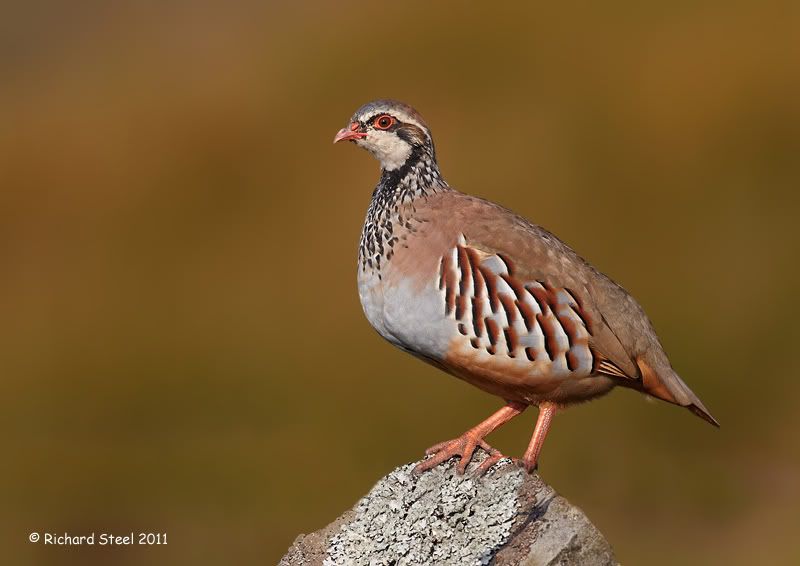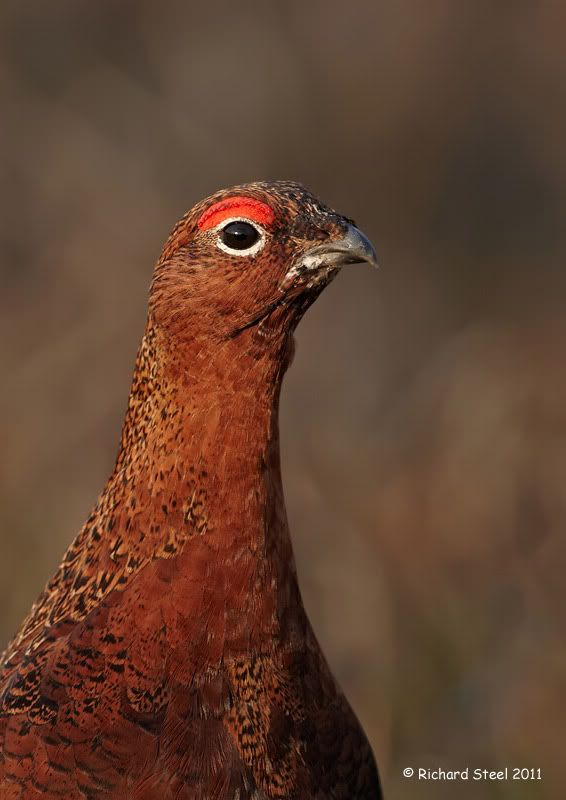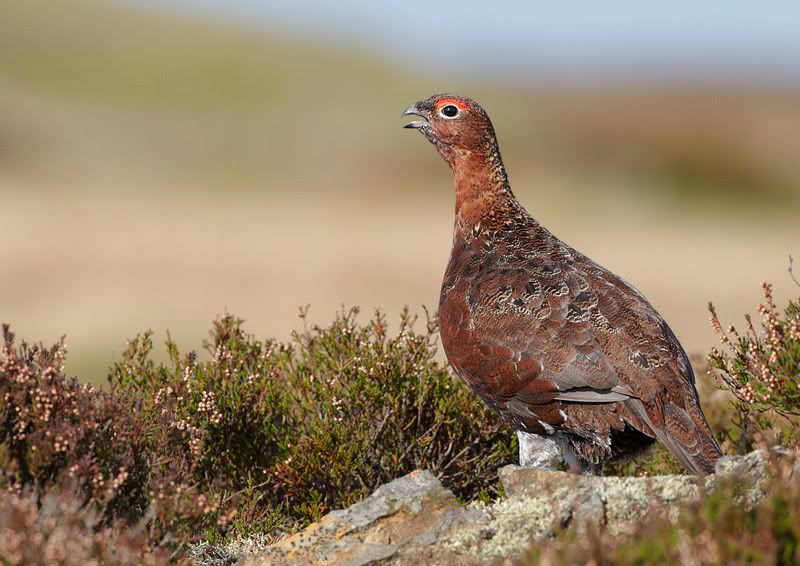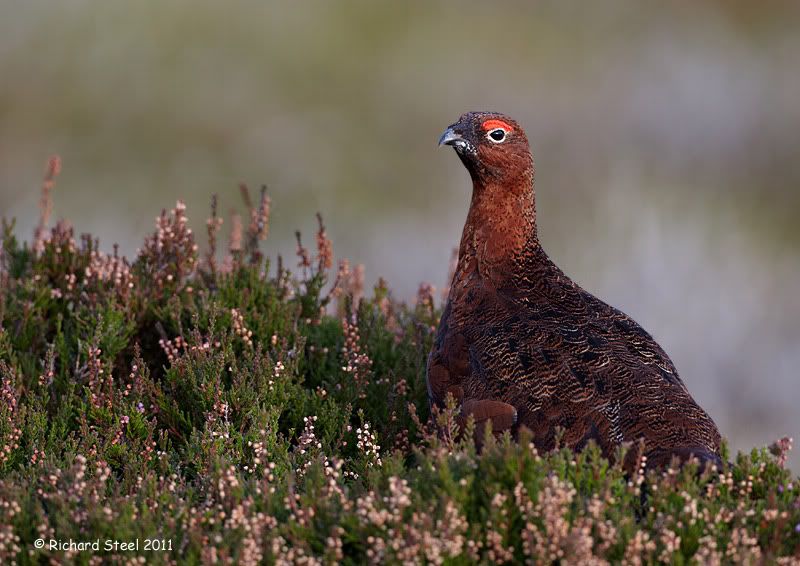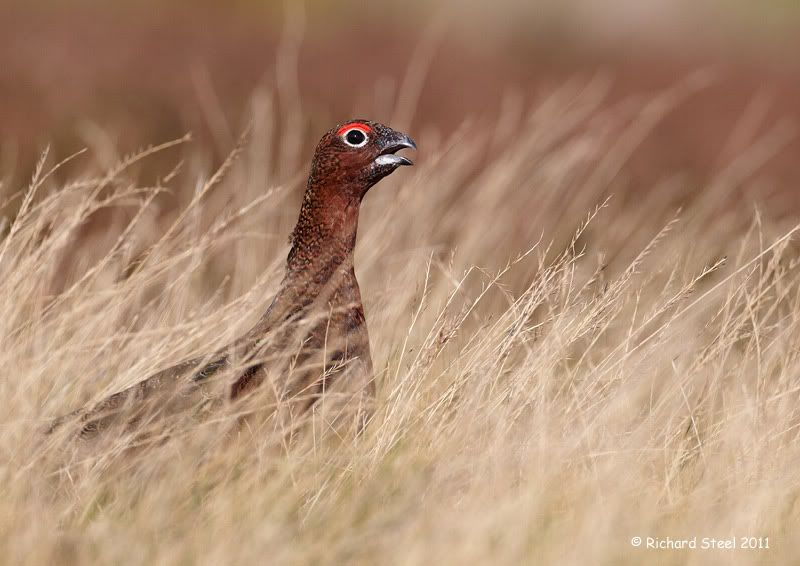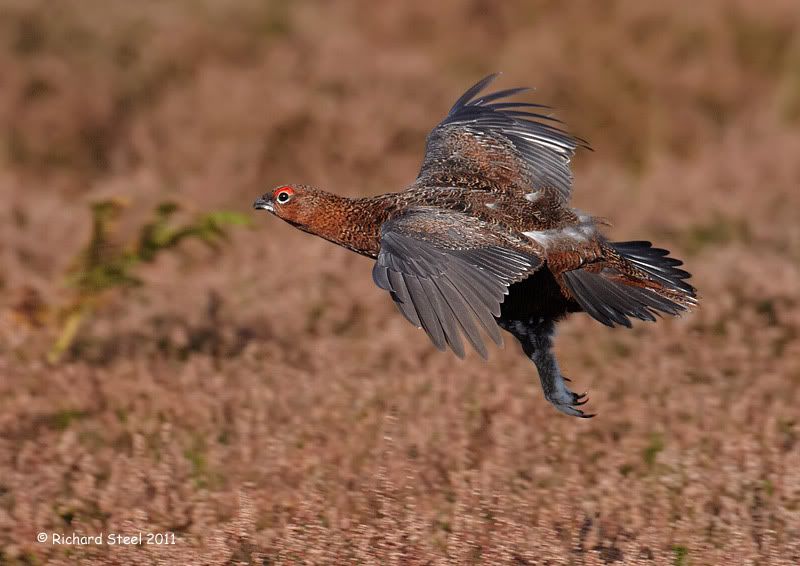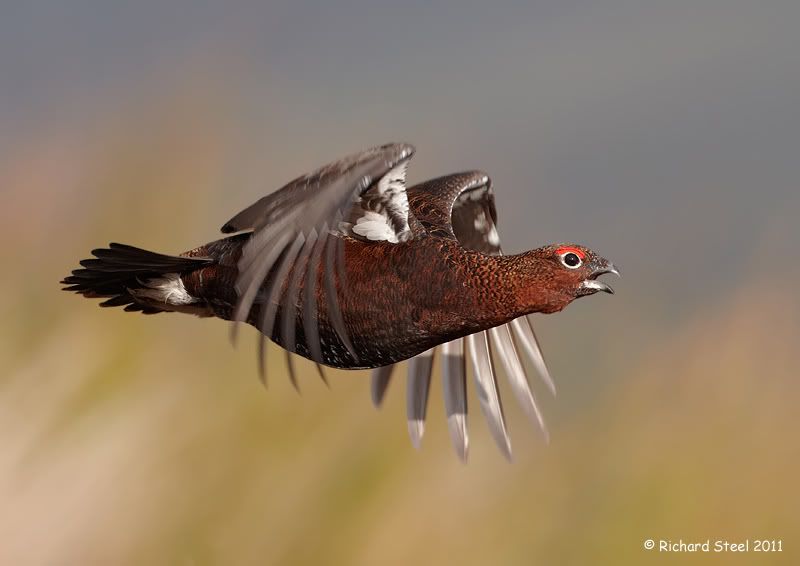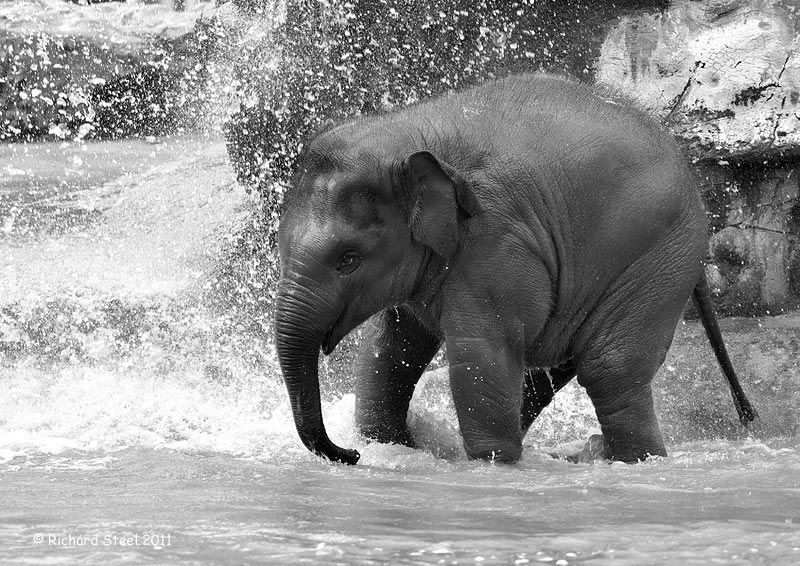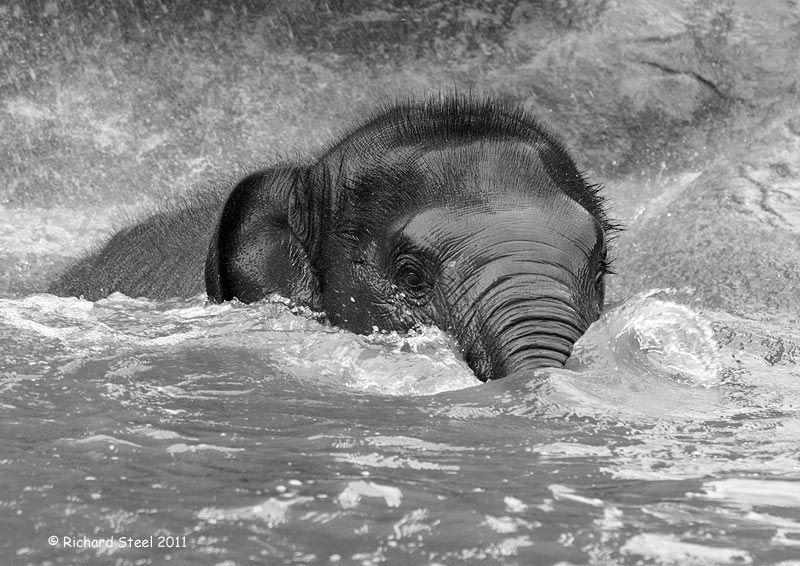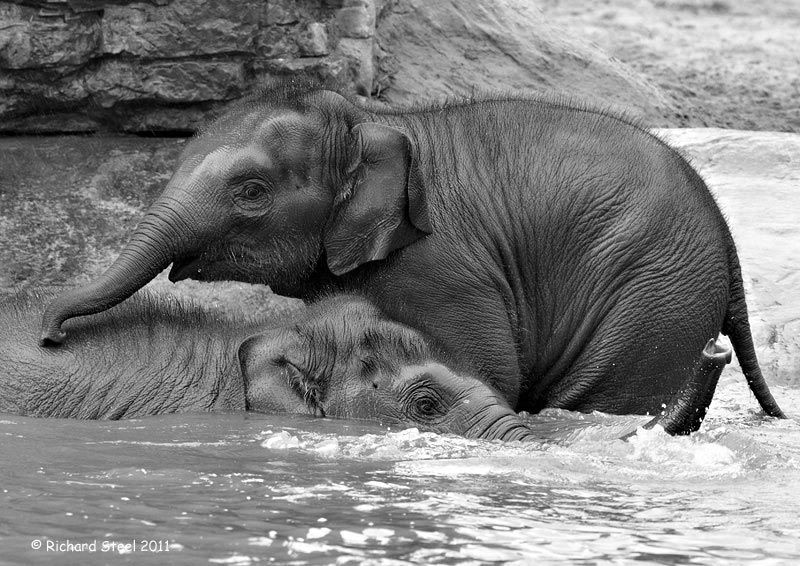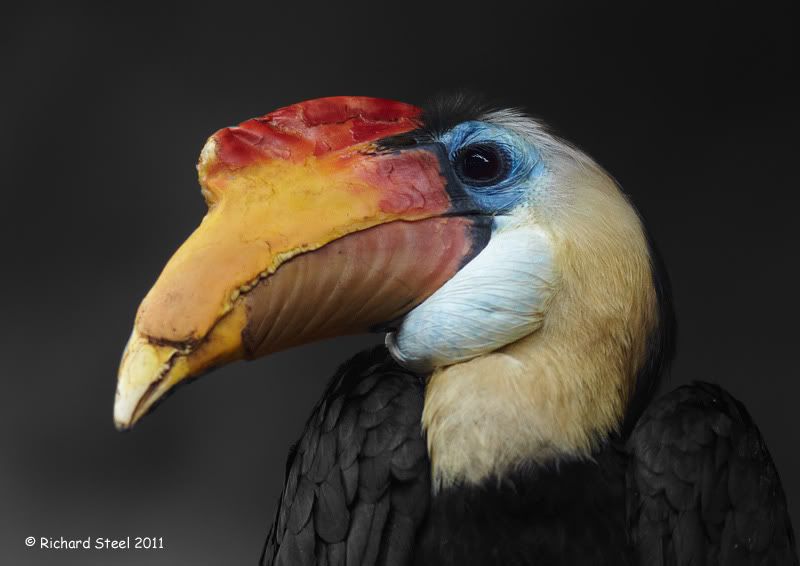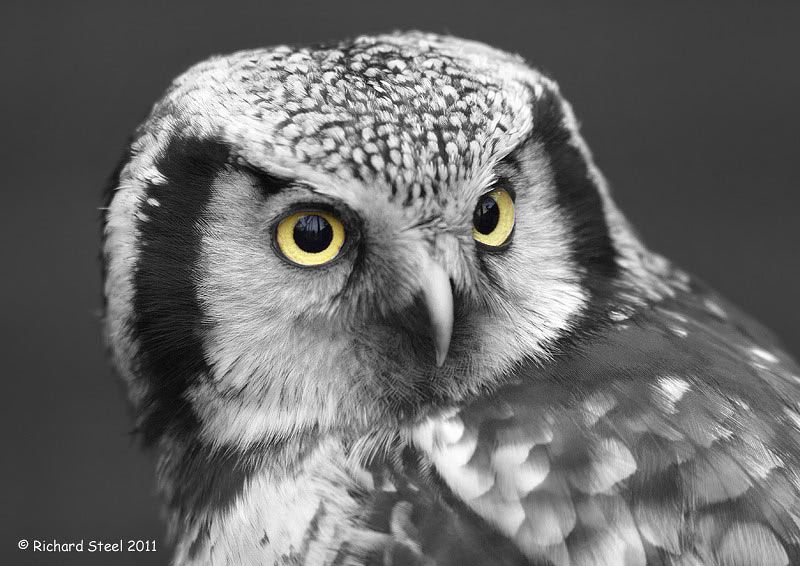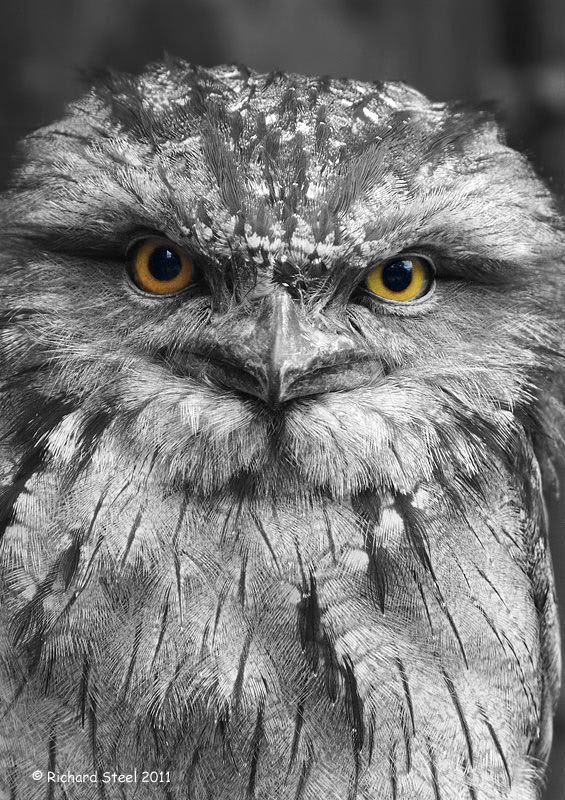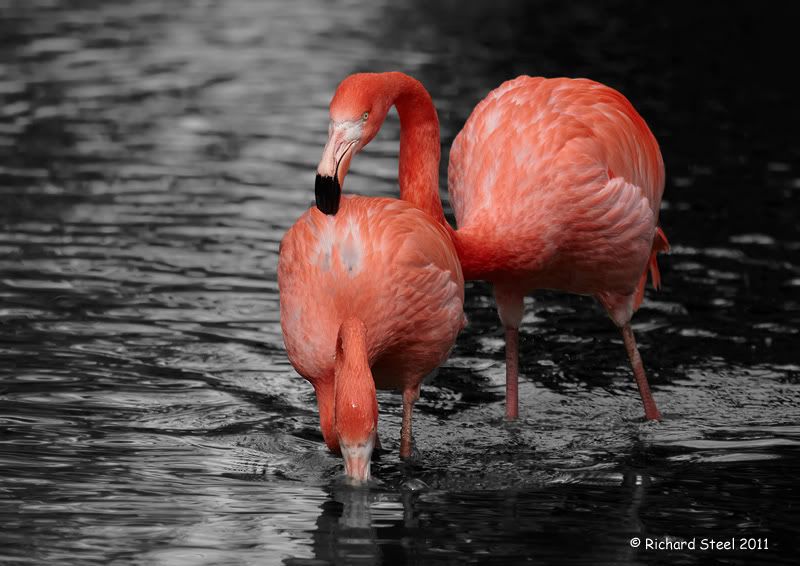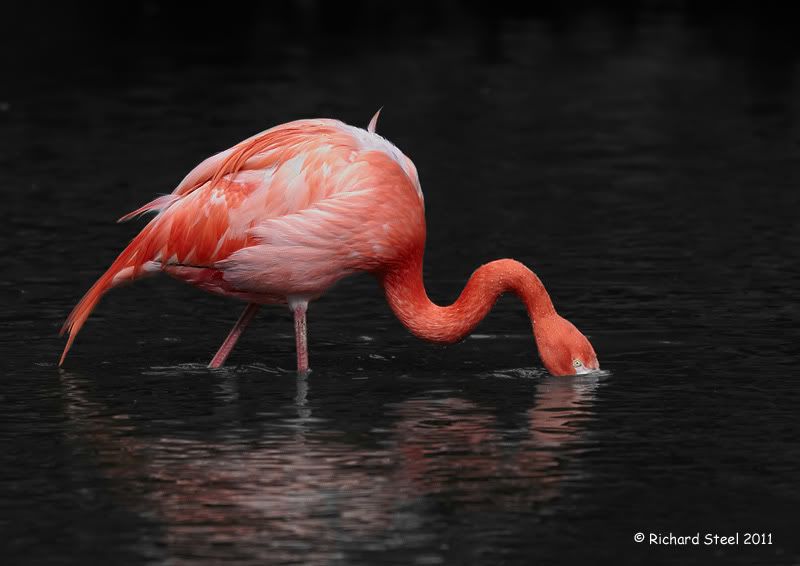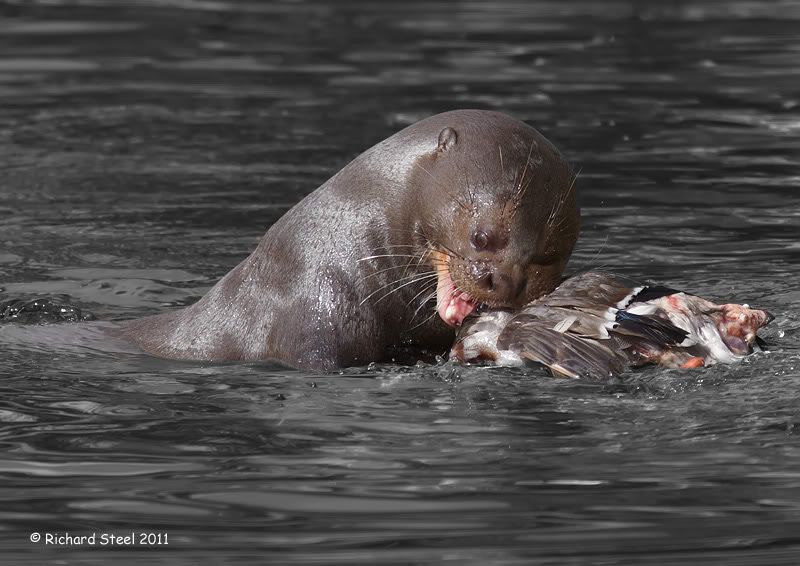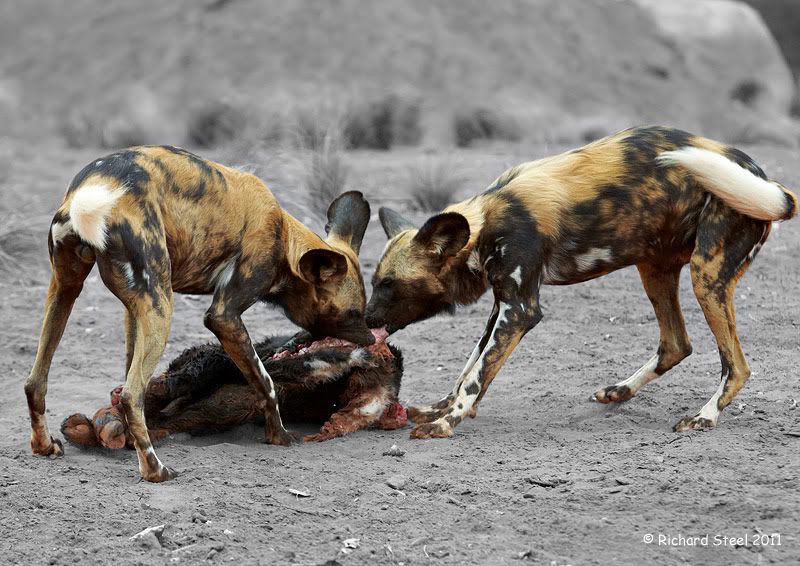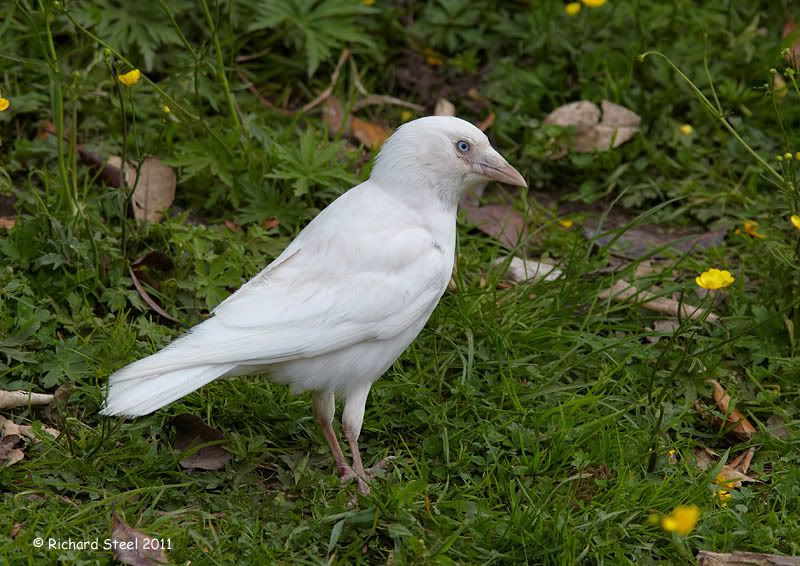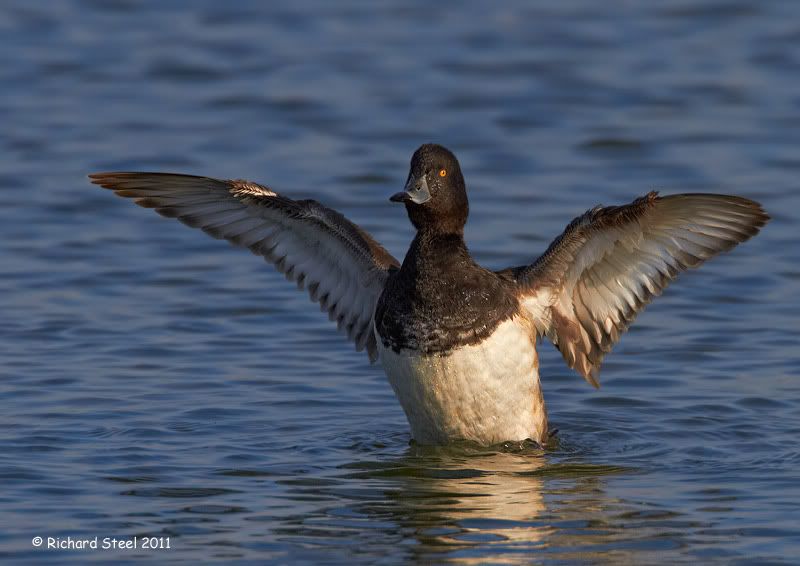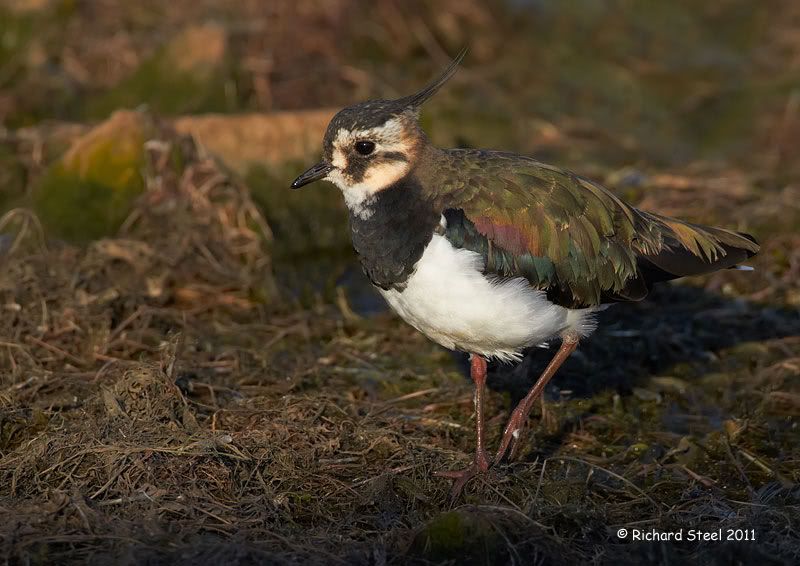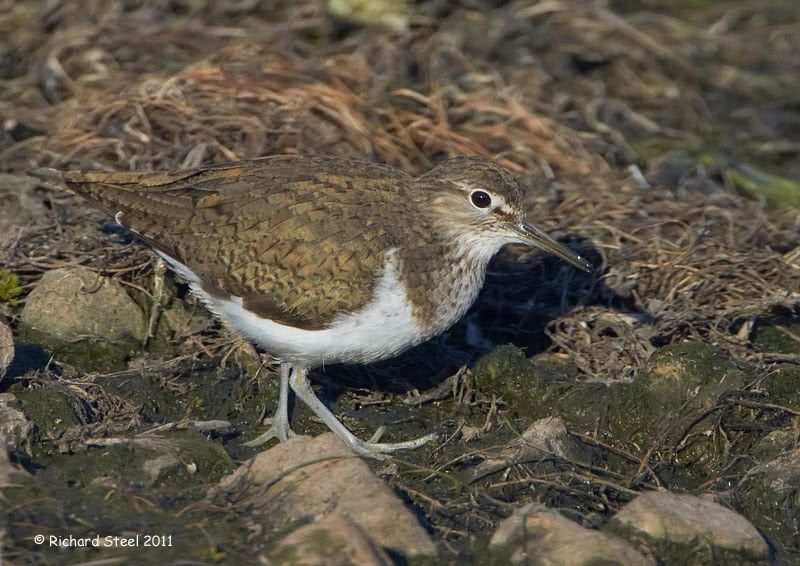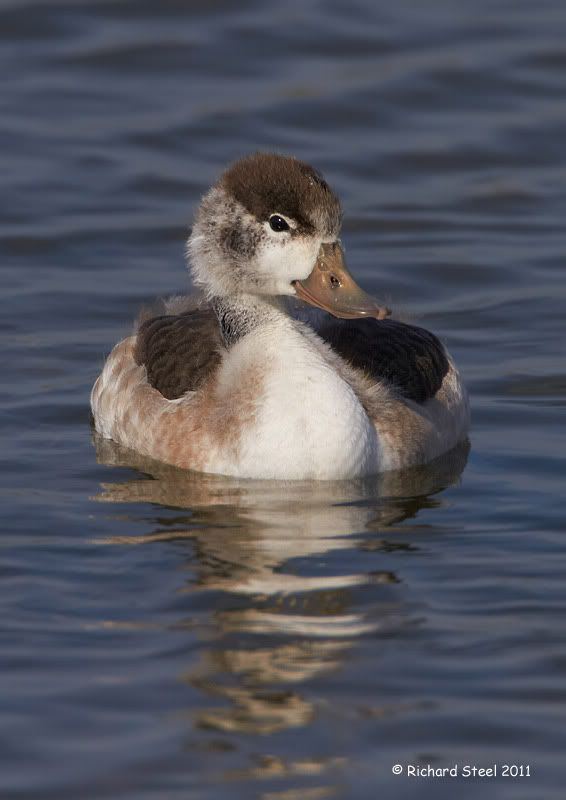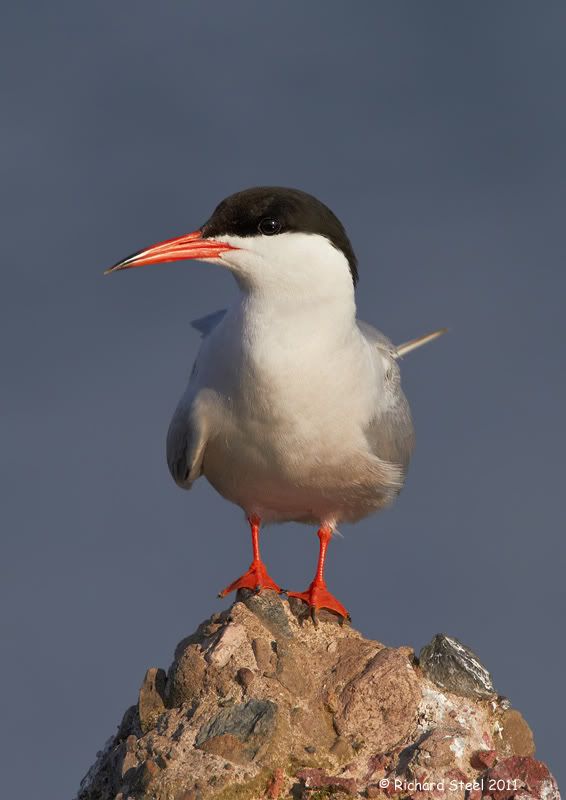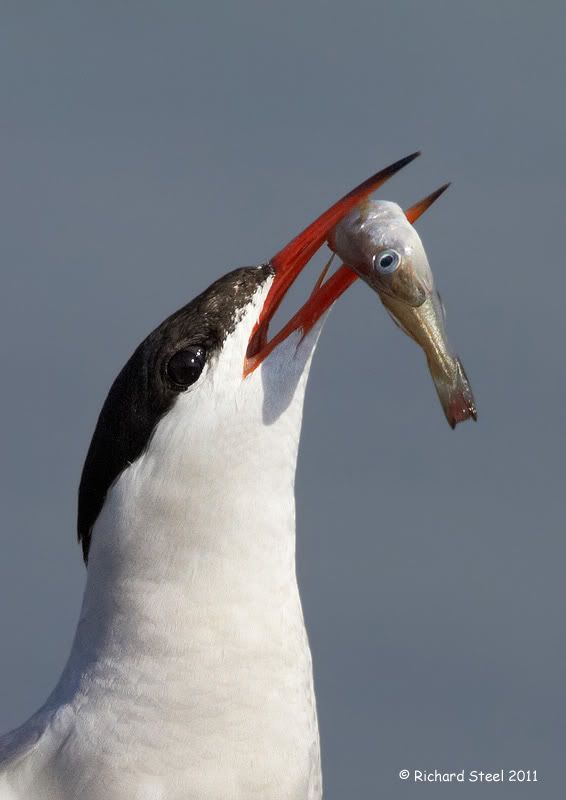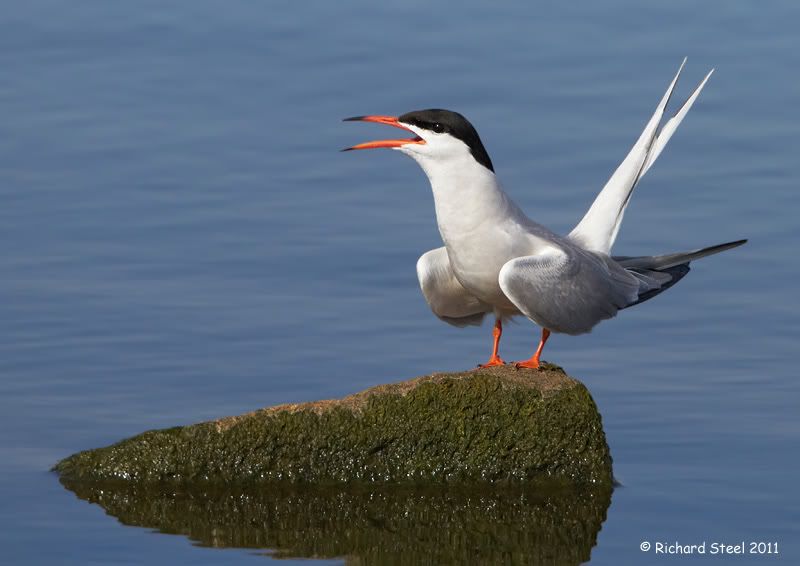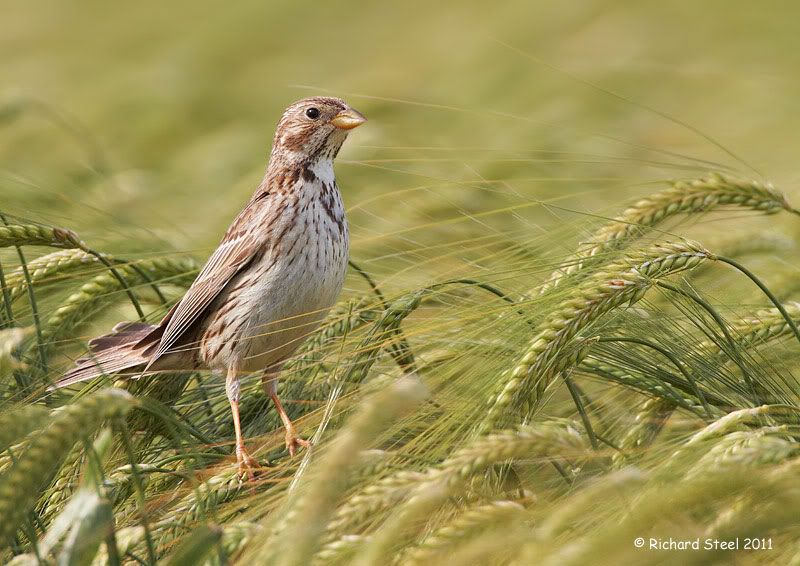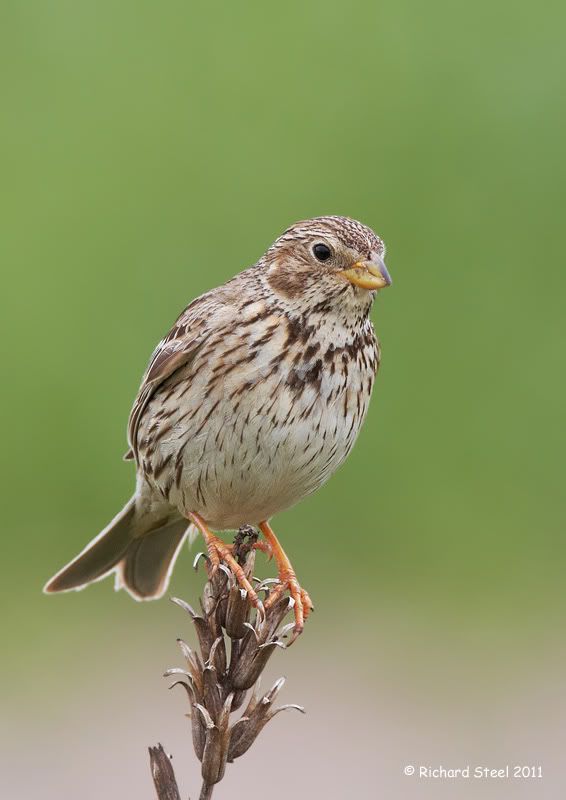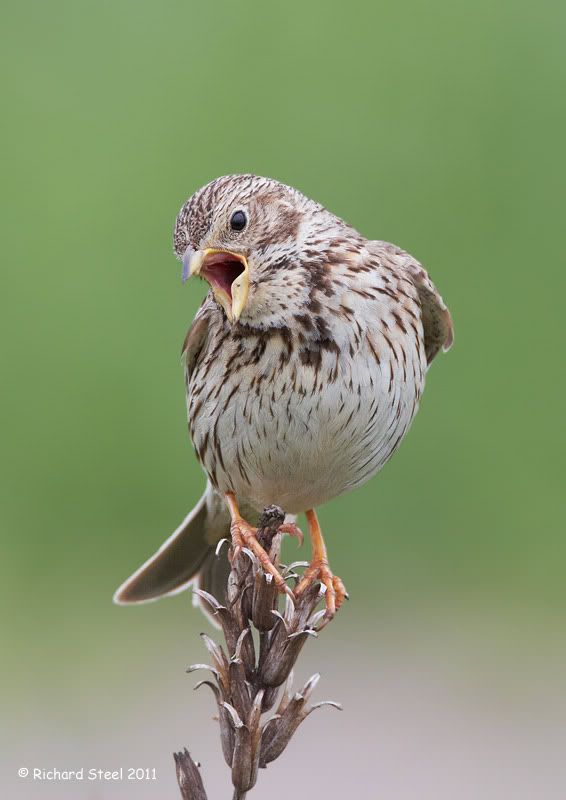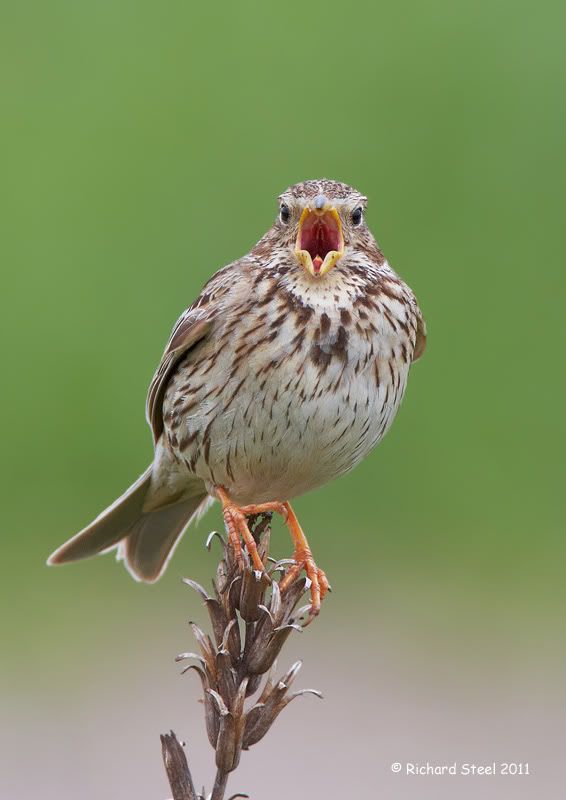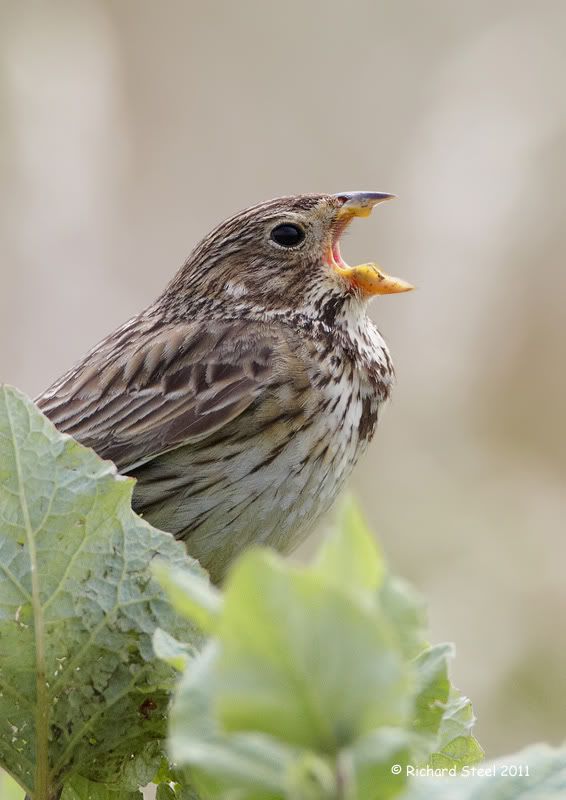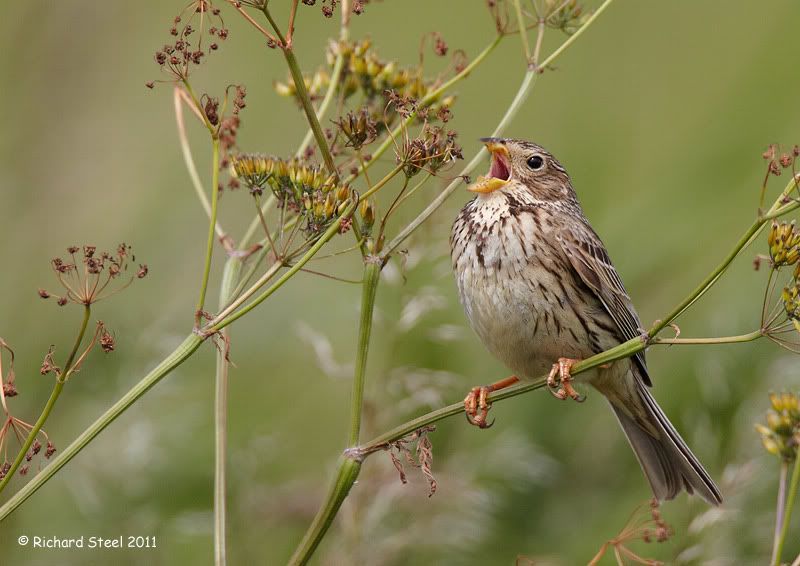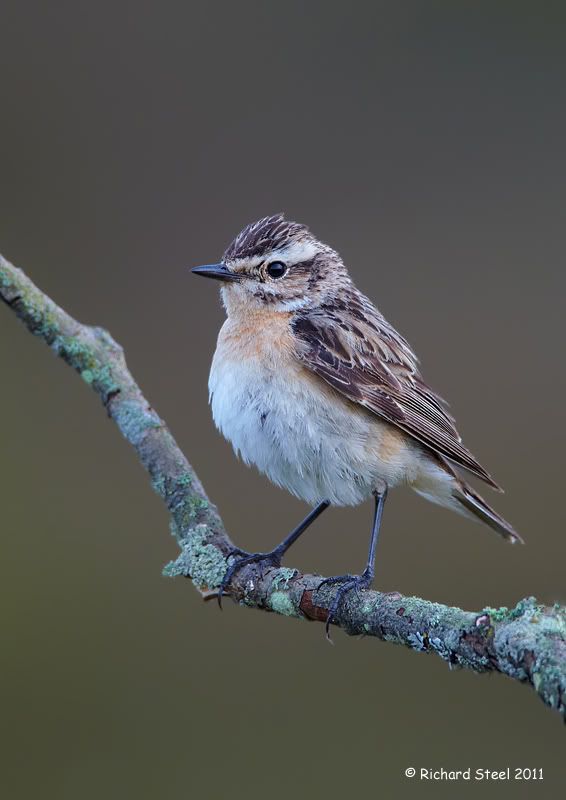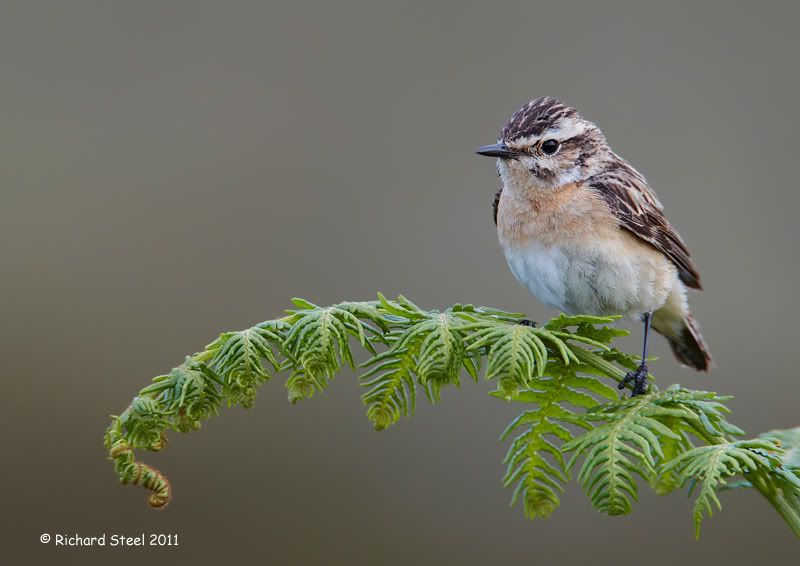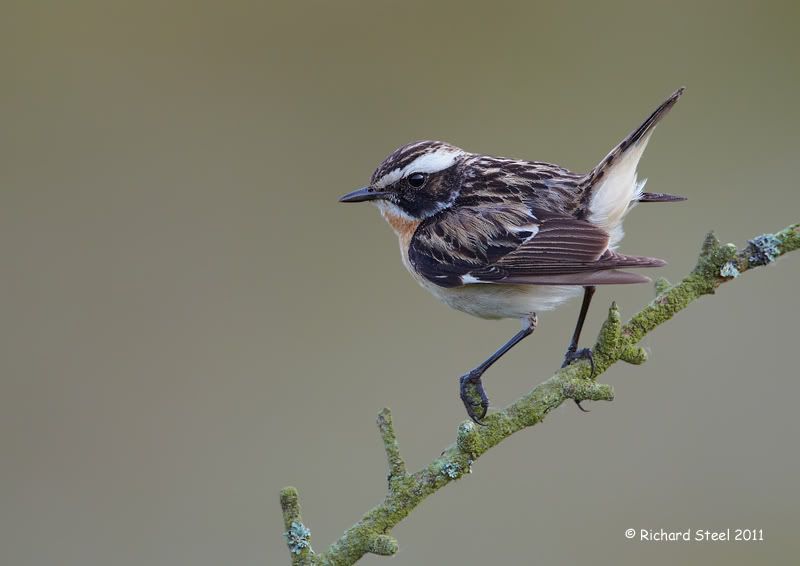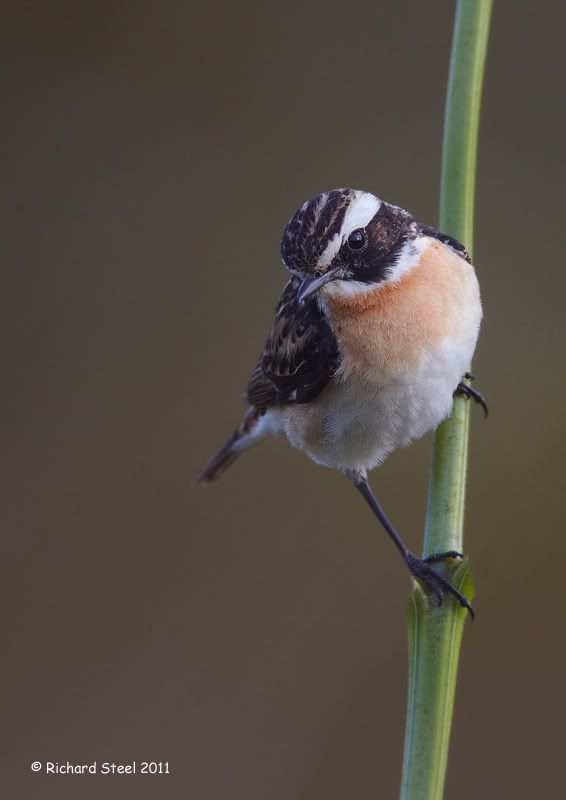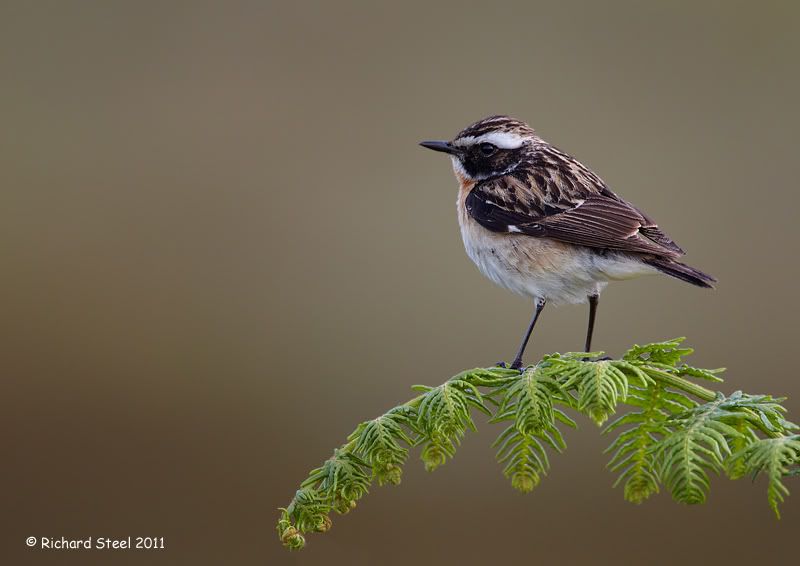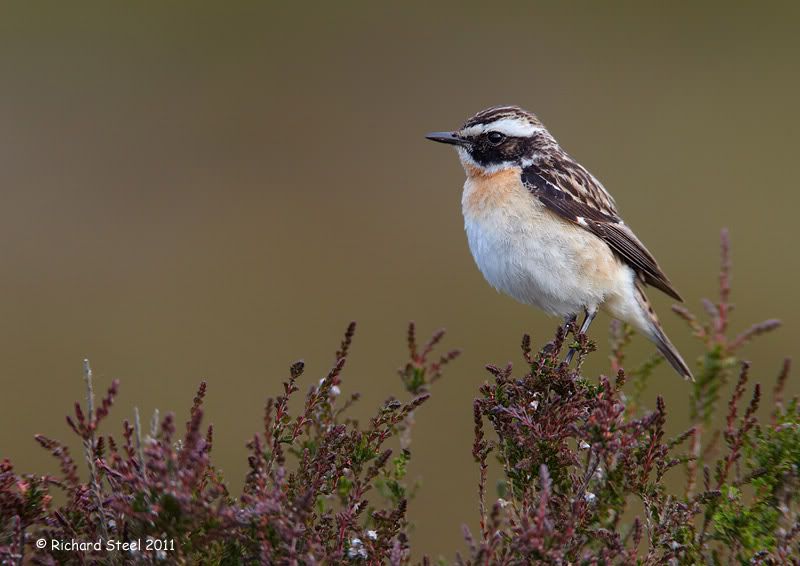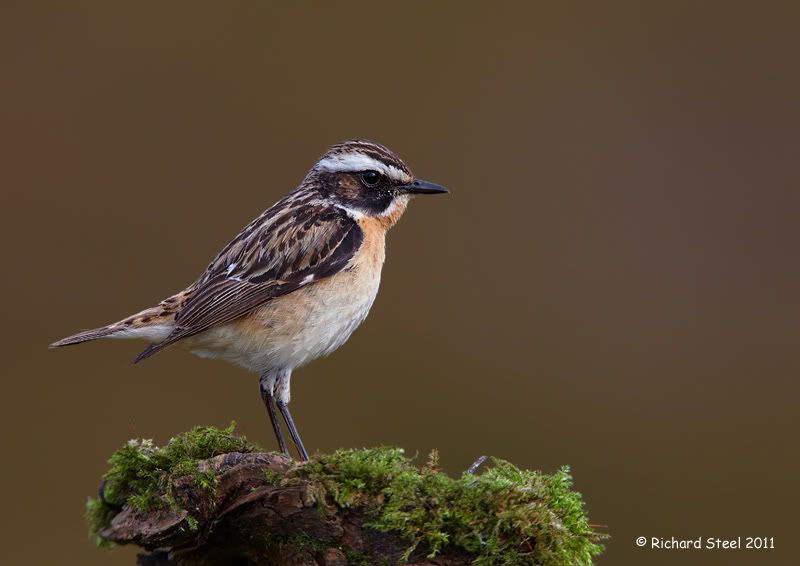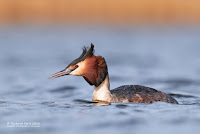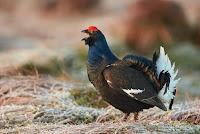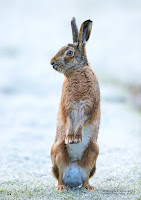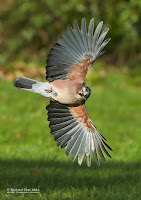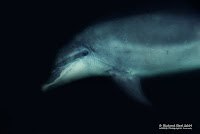It has been many years, apart from the sad sight of road kill, since I have seen a badger. Certainly I have never photographed these nocturnal mammals. So last week I decided to take myself off for a couple of days to a farm down south that has been set up for photography. The site has a number of hides overlooking a flood lit area frequented by well fed badgers that importantly are oblivious to camera flash.
I arrived fairly late with the shortening day length and so it was a bit of a dash around to get set-up for the first night. My experience of flash photography is very, very limited as I always prefer to use the light from the sky. Obviously this is not an option at night. For the first evening I decided to concentrate on an area of longer grass in front of one of the hides and set up three wireless flashes (kindly loaned to me) in an arc around an area baited with their favourite food, peanuts. A small trail of peanuts was then laid to draw the badgers to the area where I hoped to photograph them. All sounds good in theory and a few test photos looked good on the back of the camera although obviously missing the essential badger!
3 hours later and all was still quiet except for the night noises of owl, foxes, deer and rats moving and calling in the surrounding undergrowth. A further half hour passed before I caught my first sight of a huge male badger slowly making its way up the field. It picked up the peanut trail and slowly advanced until it was about a metre short of the 'target area' and stopped, looked at the small tripod supporting the flash, turned round and wandered back to the sett. This behaviour was repeatedly periodically over the next 3 hours, with up to four badgers present, which were wonderful to watch but with an end result of zero photos. I made my way to bed disappointed and frustrated, thinking about the necessary change of tactics required for the following final night.
The next evening I used a different hide and this time clamped the flashes to some small branches stuck in the ground to make them less obvious. Again peanuts were scattered in front of the arc of flashes and some trails of nuts to hopefully draw the badgers to my chosen spot. 2.5 hours passed with only barn owl briefly hunting across the field and the sounds of the night for company. The first badger finally appeared and once more homed in with its superb sense of smell on the the trail of nuts. Just as it reached the the 'target area', the batteries on all three flashes died in the space of about 30 seconds. I now had the badger in the perfect spot but no light....arrrgggh!. I had assumed having not taken any photos the previous night the batteries would be fine. Hard lesson learnt.
Once the badger had wandered off into the adjacent wood, I crept out of the hide and changed all the batteries on the flashes. Four badger-free hours later and I was starting to convince myself it was just not meant to be. Then the big male wandered out of the woods and directly across the field towards me. The photograph below is my first ever badger photo, and I can't but help wondering if its 'laughing' at me.
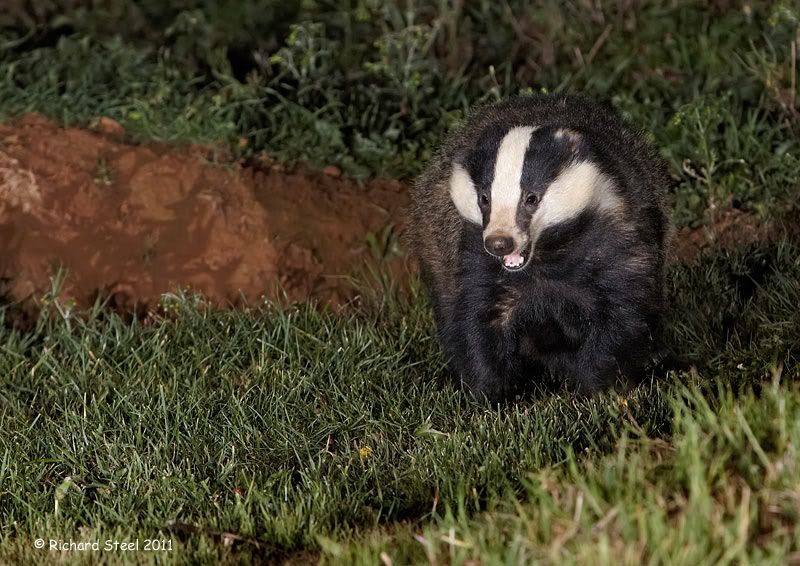
The badger came closer as it sniffed out and followed the peanut trail leading towards me.
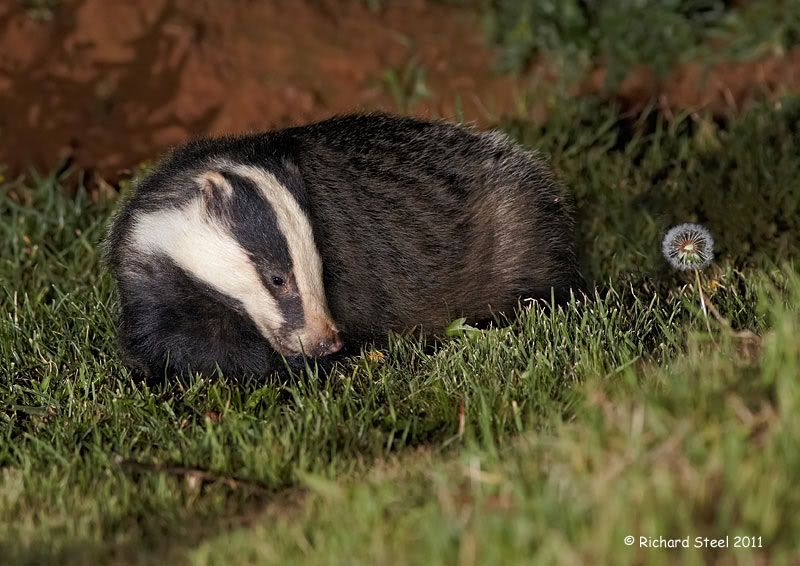
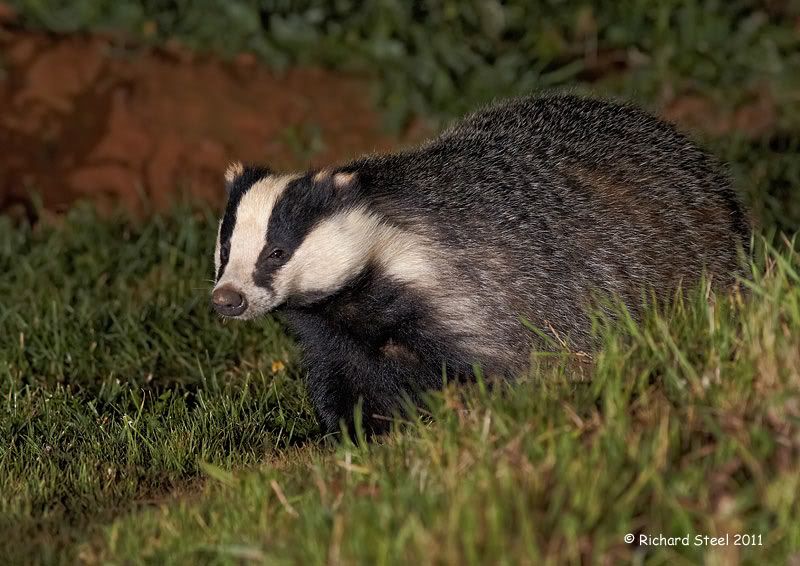
It was not until the badger came across directly in front of me at close range that I appreciated its impressive size. I do not think this one will struggle through the winter given its accumulated fat reserves.
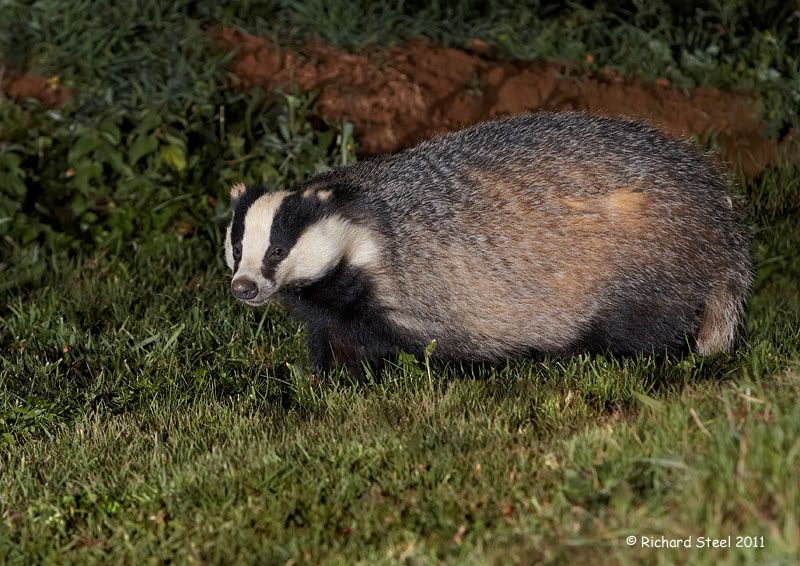
The big male disappeared down a sett entrance only to be replaced by the emergence of a another badger. Just as it wandered in to my' target area' and much to my disbelief the right hand flash died despite the new batteries, leaving just the two operational flashes to my left. Fortunately these carried on working and it was interesting to see how this small change of lighting has given a different feel to the photographs.
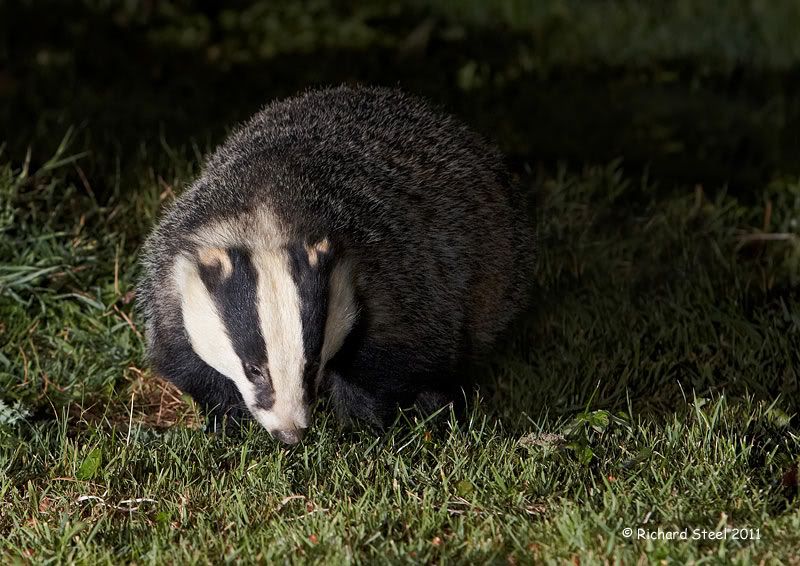
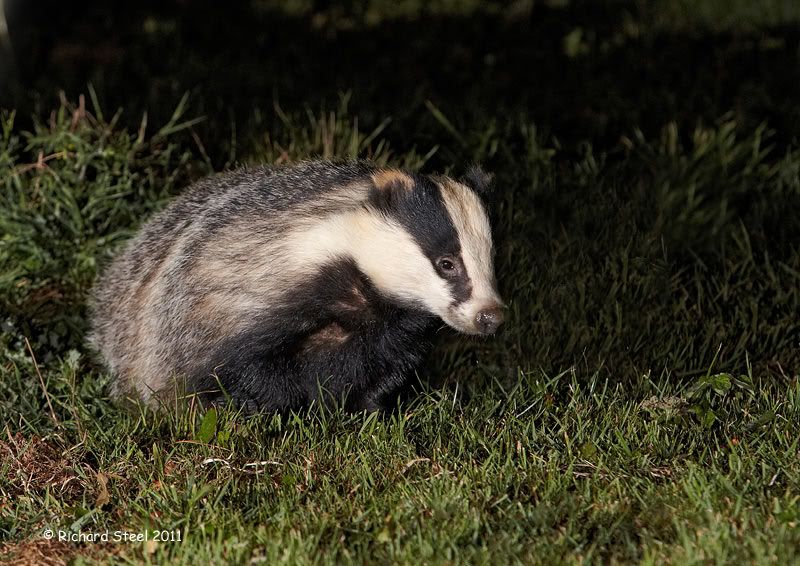
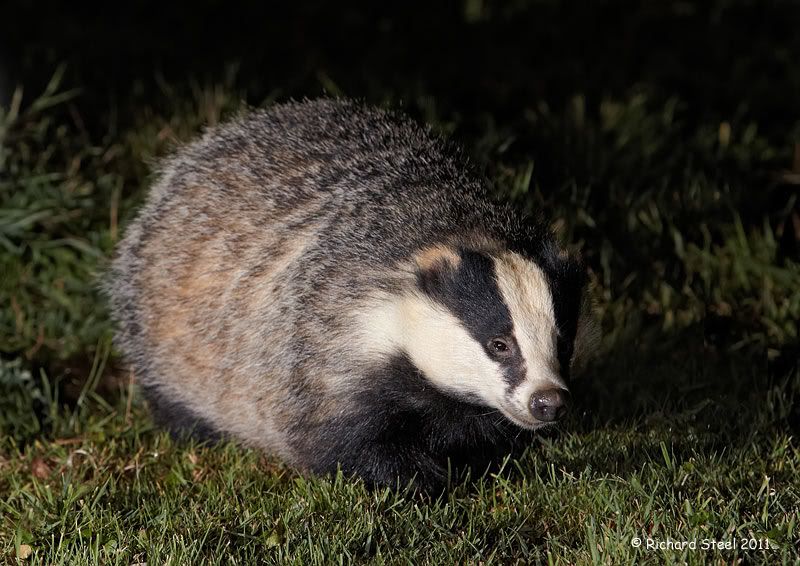
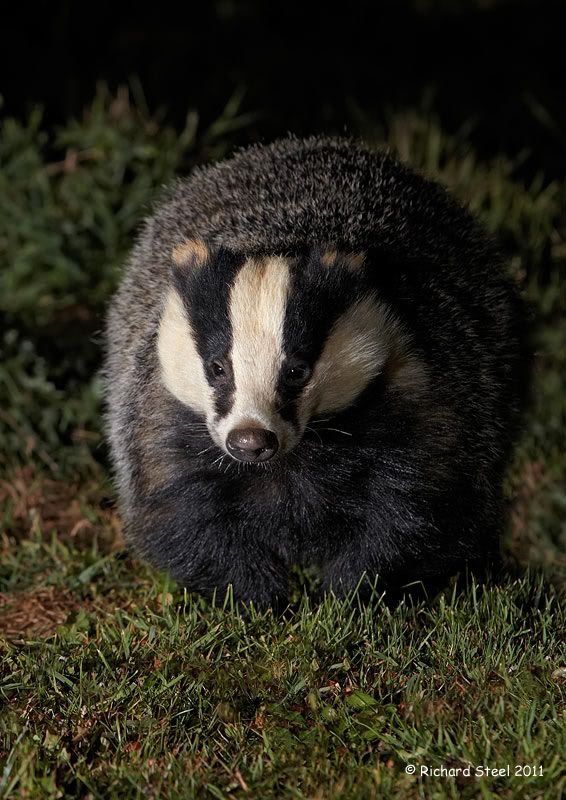
I eventually packed up at around 2am. A total of around 14 hours in a hide for a total of 30 photos was not as productive as I had anticipated. However, it was a still a wonderful and memorable experience and a good number of lessons were learnt for next time. I would like to thank Sandra and Richard for their hospitality and for my partner Dawn for putting up with my return in the early hours of the morning over the two nights.

